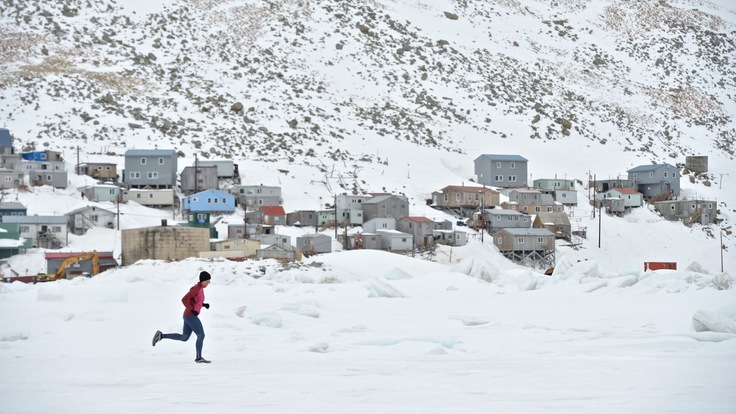A trail run is such an easy way to enjoy a little outdoor time. This is one reason we pack our shoes wherever we travel; you can usually get out for a run no matter where you are in the world. The dark, cold months of winter can make this a bit more challenging. But for us, the only thing worse than logging endless hours on a treadmill is falling out of running shape altogether.
Several years ago, we found ourselves facing a mid-winter trail-running assignment in a much warmer part of the world. For the two months leading up to that trip, we dove into running during the frigid Alaskan winter. When properly equipped, we found the long jaunts through the snow and ice to be exhilarating. They still are today, and we continue to run the trails around our home in Anchorage year-round.
Here are a few suggestions for getting out during the dark and cold off-season.
Join the Club
Normally running clubs aren't our thing, but we can have a change of heart come December when both the hours of daylight and temps are single digit. Having a scheduled weekly event where all you have to do is show up can make all the difference when motivation is at rock bottom.
Our local running shop has teamed up with a tavern to put on a midweek "pub run." The course changes each week and there's a usually a couple-hundred folks to run with. These are pretty mellow, with the focus more on getting together than improving your PR.
For more hairball outings, we join a smaller group of hardcores for an "epic run." These usually involve some late-night running adventure up into the mountains above town. Whenever you feel like you can't go any further, all you need to do is look up at the night sky. It's amazing!
Get Geared Up
Running gets a bit more complicated in the off-season. Layering your clothing is essential. We're usually in some sort of running tights, a couple of layers on top, and a super-lightweight jacket that can vent. We keep hat and gloves lightweight, but go heavy on the socks. You want to start out feeling chilly at the trailhead; otherwise you'll overheat in the first 10 minutes.
Shoes are usually Gore-Tex® for warmth and can be paired with small ankle-high gaiters to keep snow out. Traction is essential, unless you want that "running up a sand dune" feeling for training purposes. Some traction devices are best for actual ice while we prefer Yaktrax® for running in snow.
Since it's dark at 4pm, you'll need a headlamp or handheld light. There are pros and cons to each, but we usually carry both. A headlamp will light what's in front of you, but a powerful flashlight is better at lighting up obstacles or a moose standing just off the trail.
Hydration can be tough depending on temperatures. A winterized hydration system is a start, but you have to be vigilant about blowing the water back out of the hose with every sip.
If everyone at the trailhead is looking at you like some sort of freak, then you're properly equipped for a long winter run.
Be Creative Out There
When was the last time you ran on—not along—a river? With some local knowledge on the ice conditions and good traction, frozen waterways are interesting course variations. A chain of lakes could make a great daylong adventure that's not possible in summer.
Go running in a snowstorm at night. It's like nothing else you've ever done. Bring extra lights for a psychedelic effect. Or hit it during the day deep in a stand of big trees. You'll be hard pressed to find a more peaceful place. Another great route option is roads not maintained during winter. They're usually closed to traffic and lead someplace interesting in the mountains. Bonus points if that "someplace" is a hot springs.
Knowing that you can actually have fun out there in the cold and dark, you might find yourself looking forward to your next winter running adventure,. But if not, we have one last bit of advice: Travel someplace warm. The trails around Southern California are wonderful this time of year.
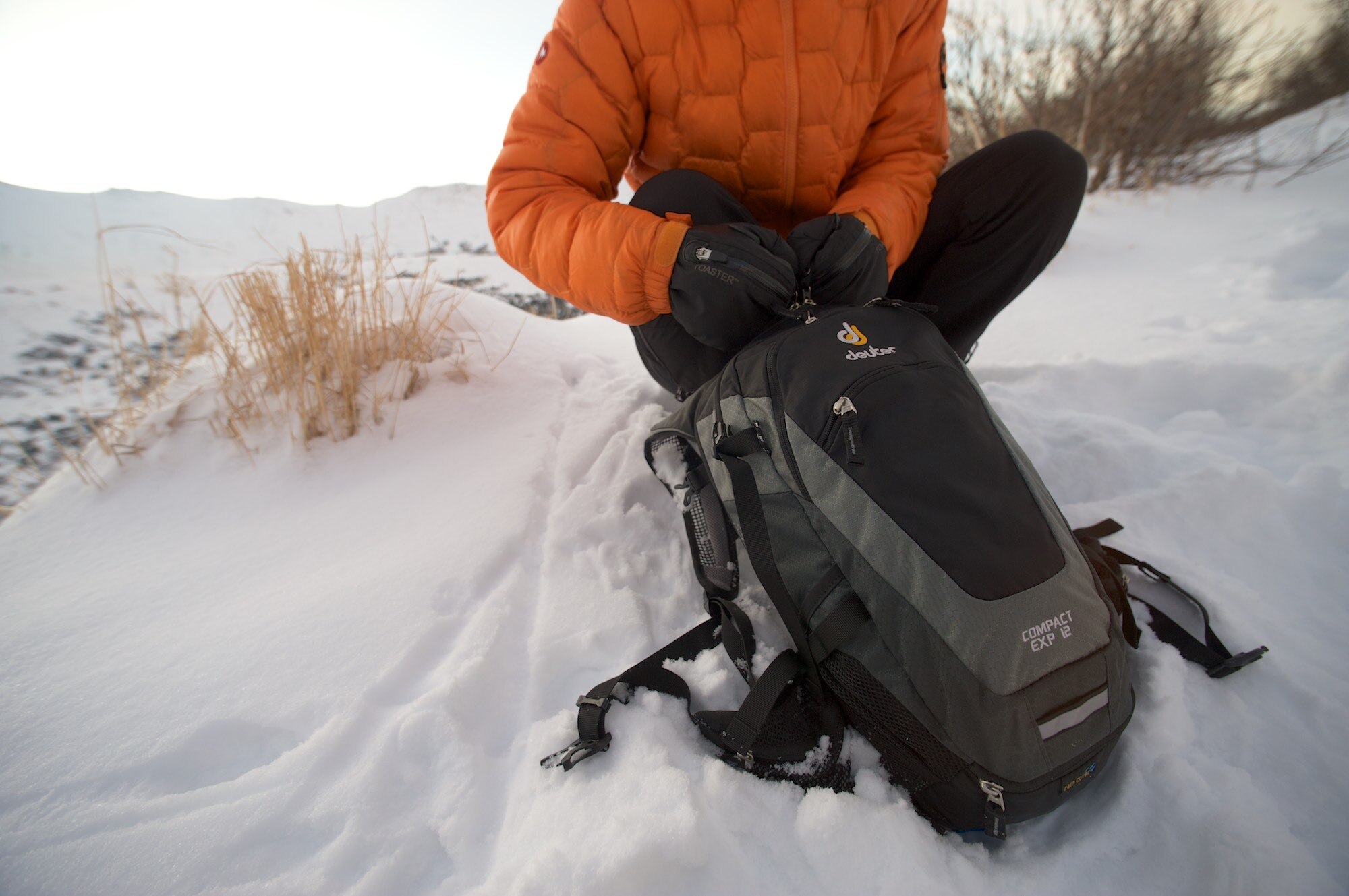
A small backpack is perfect for carrying water, snacks and extra layers.
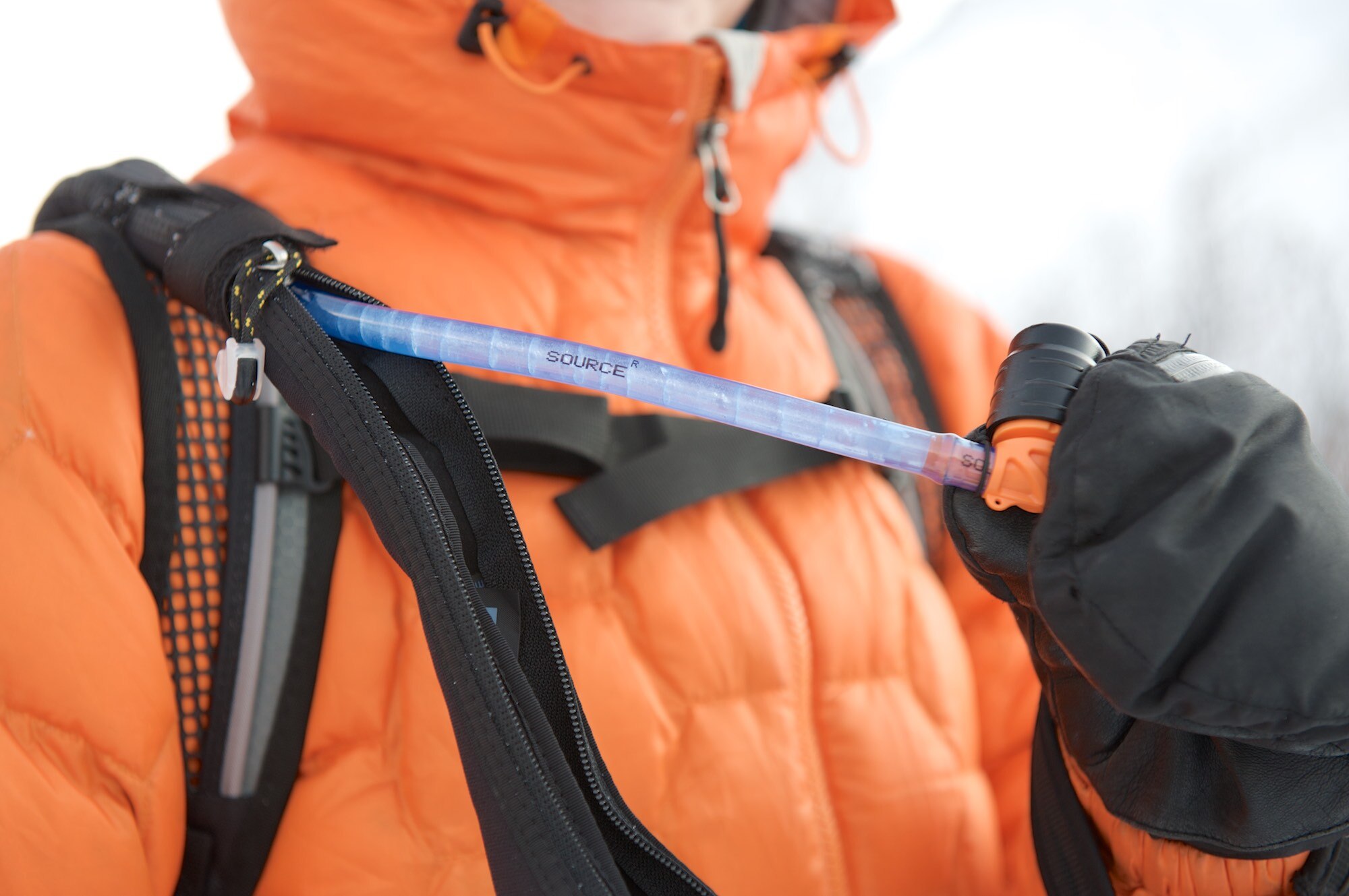
Water freezes in your hydration hose if you are not vigilant about blowing the water back with every sip.
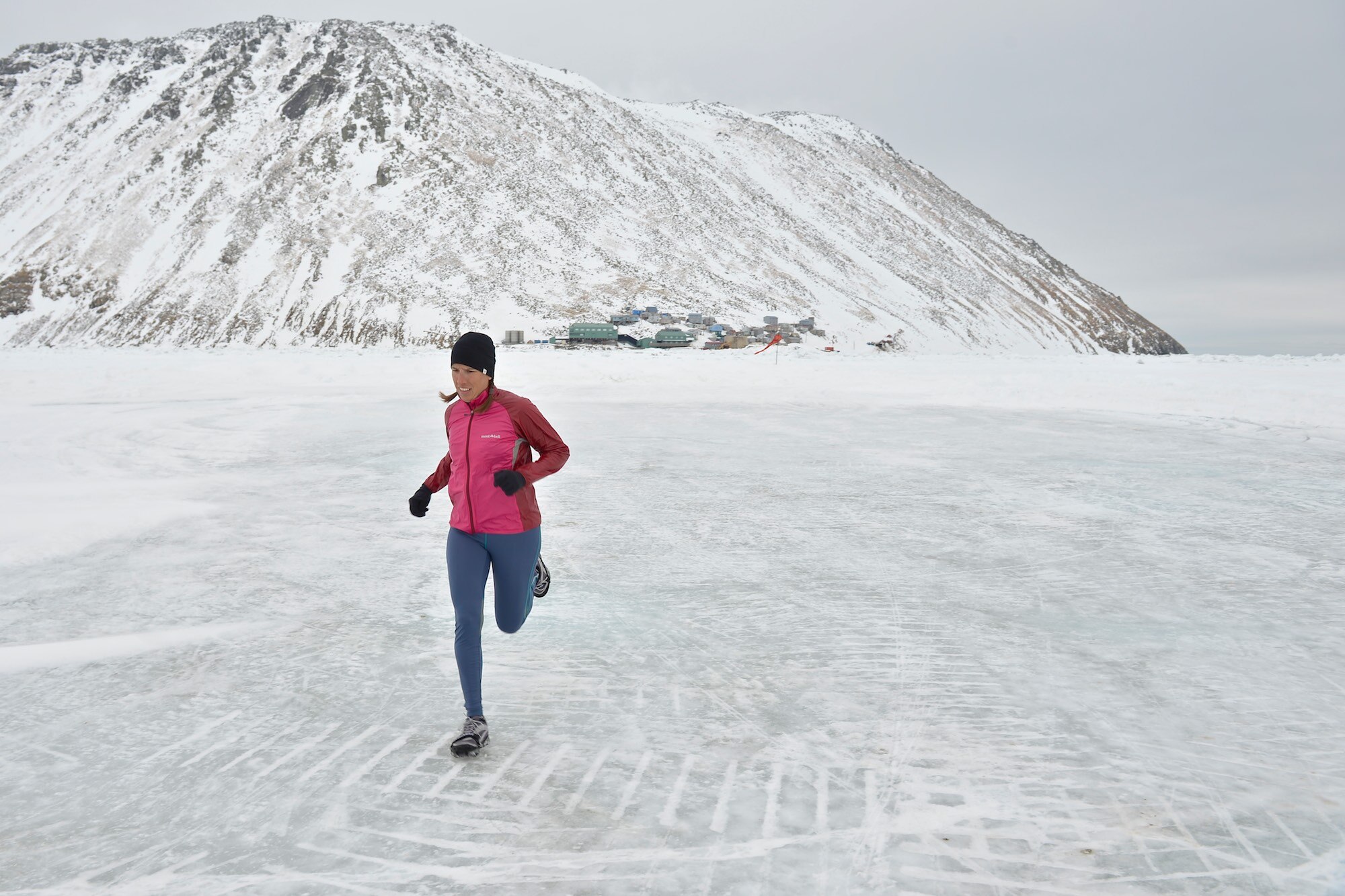
While on assignment in Little Diomede, a small Alaskan island out in the middle of the Bering Straight, Agnes Hage runs the International Date Line on the sea ice that forms between Big Diomede Island (Russia) and Little Diomede (known as Tomorrow and Yesterday islands, respectively).
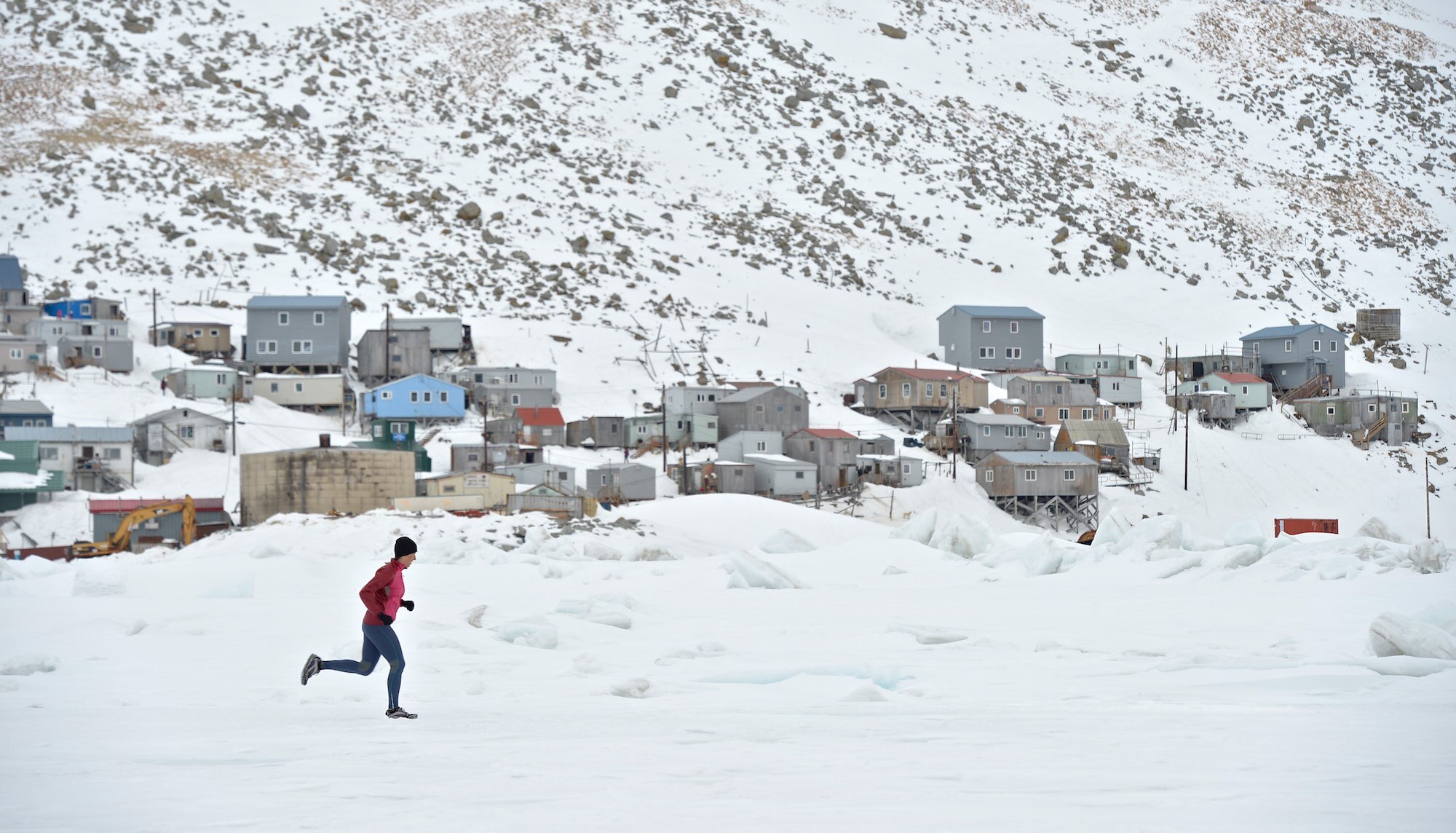
Running on the sea ice outside the tiny Ingalikmiut Eskimo village of Diomede, which clings to the craggy flanks of Little Diomede Island in the Bering Straight off the coast of Alaska's Seward Peninsula.
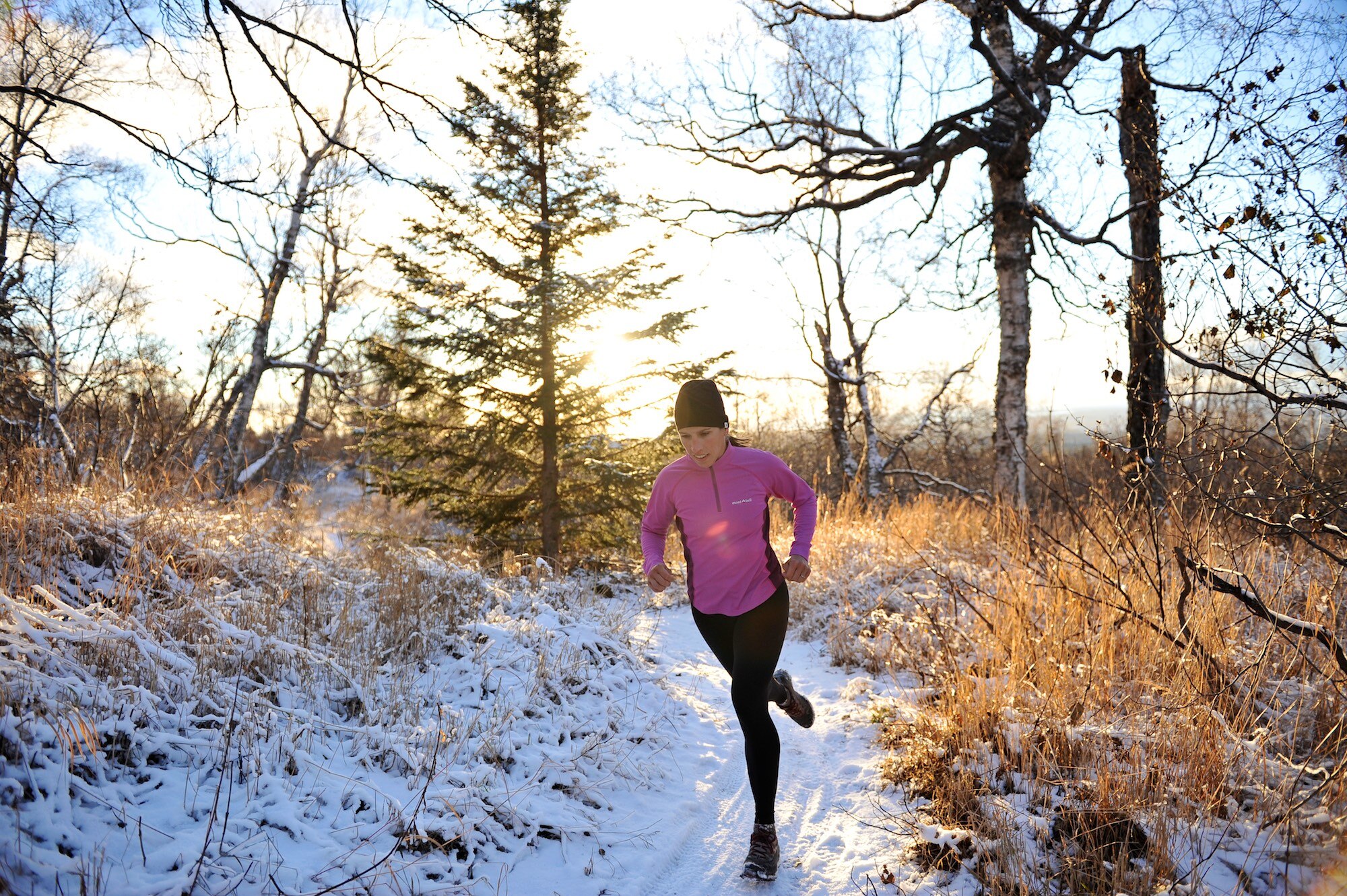
The local single-track trails make for fun and twisty winter runs.
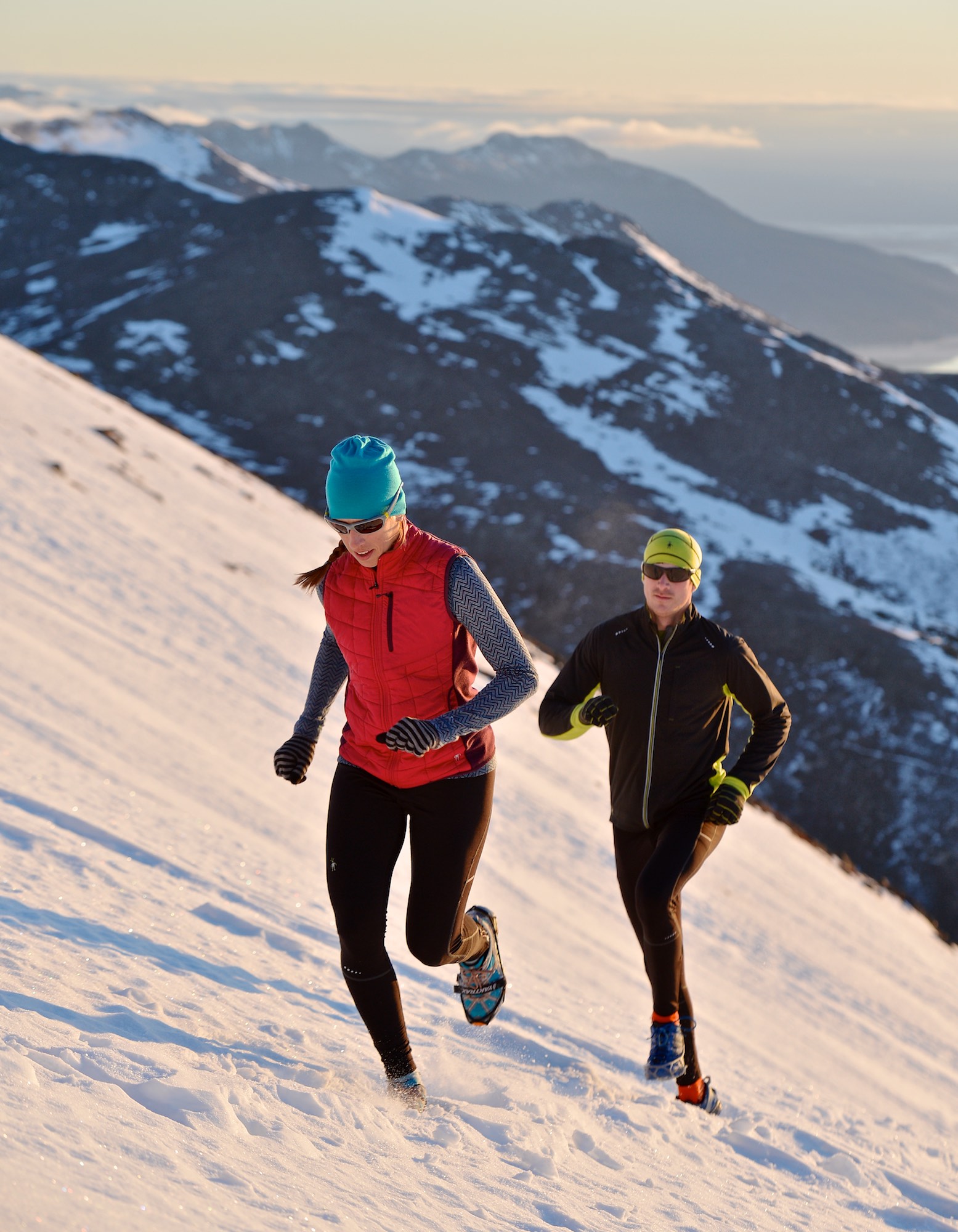
Be creative! Grab a friend and hit your favorite summertime trail to catch the sunset.
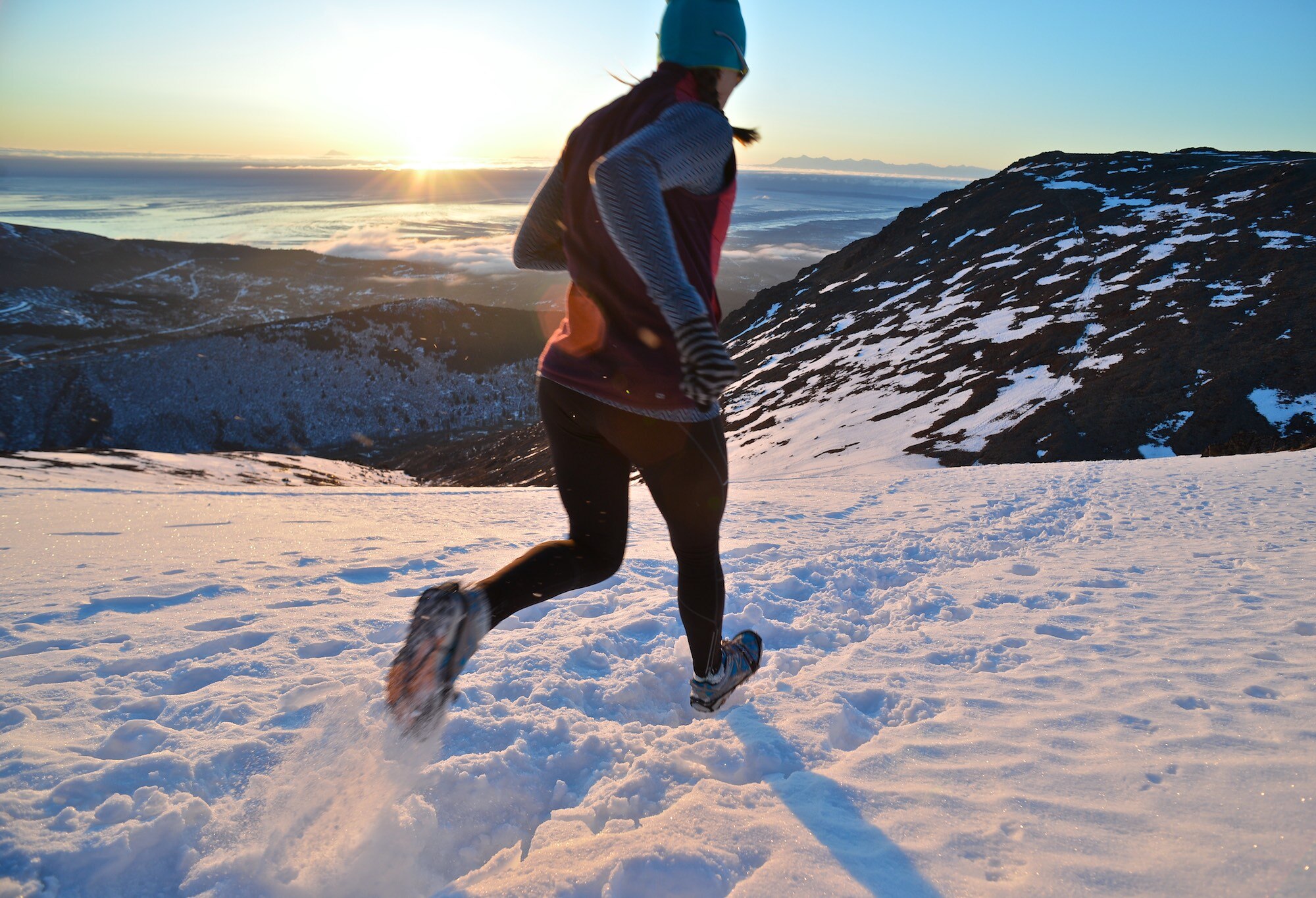
Winter conditions are challenging; be sure to invest in traction devices for the snow and ice.
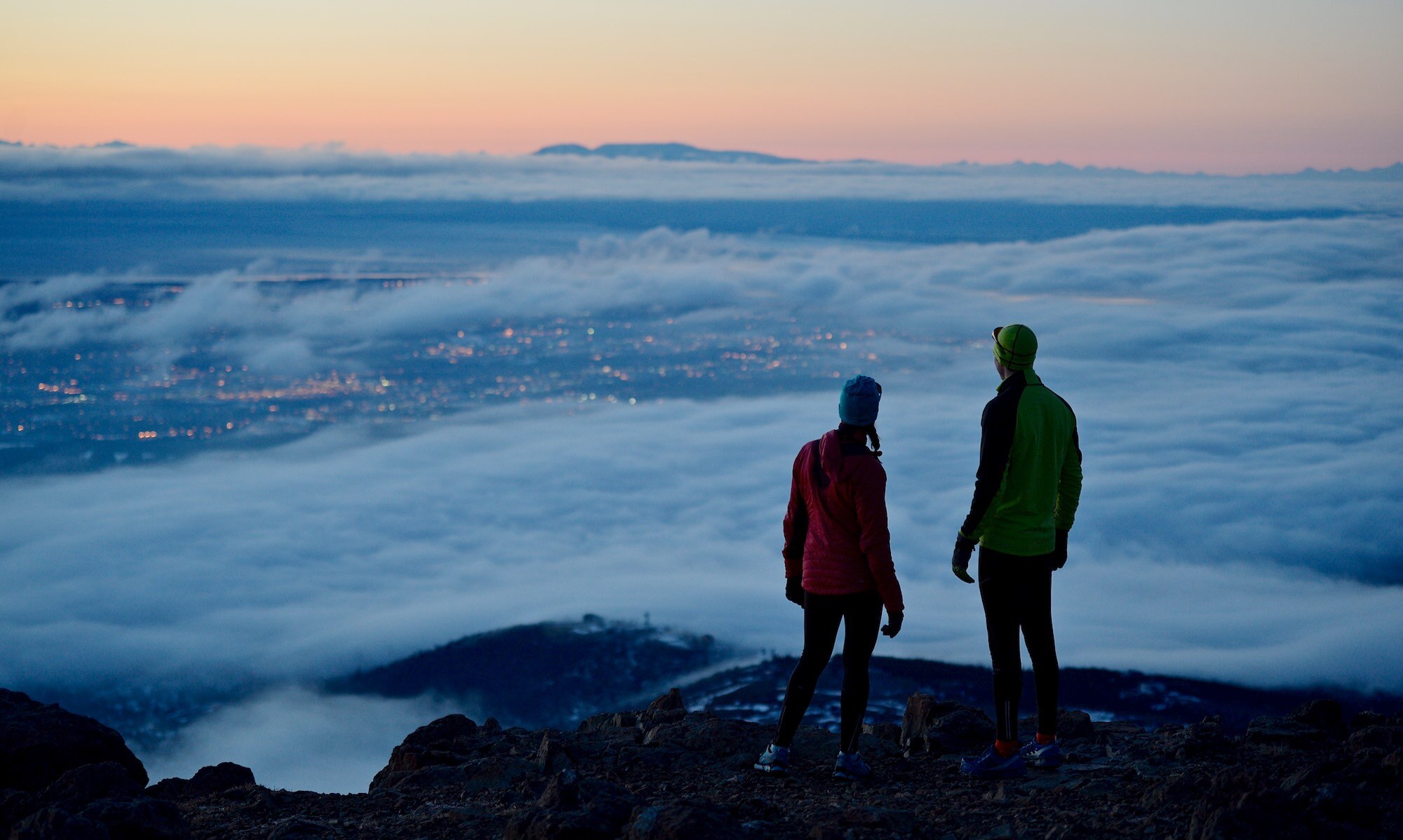
Winter running can be rewarding with a sense of adventure, a friend, a good trail and a little bit of timing.
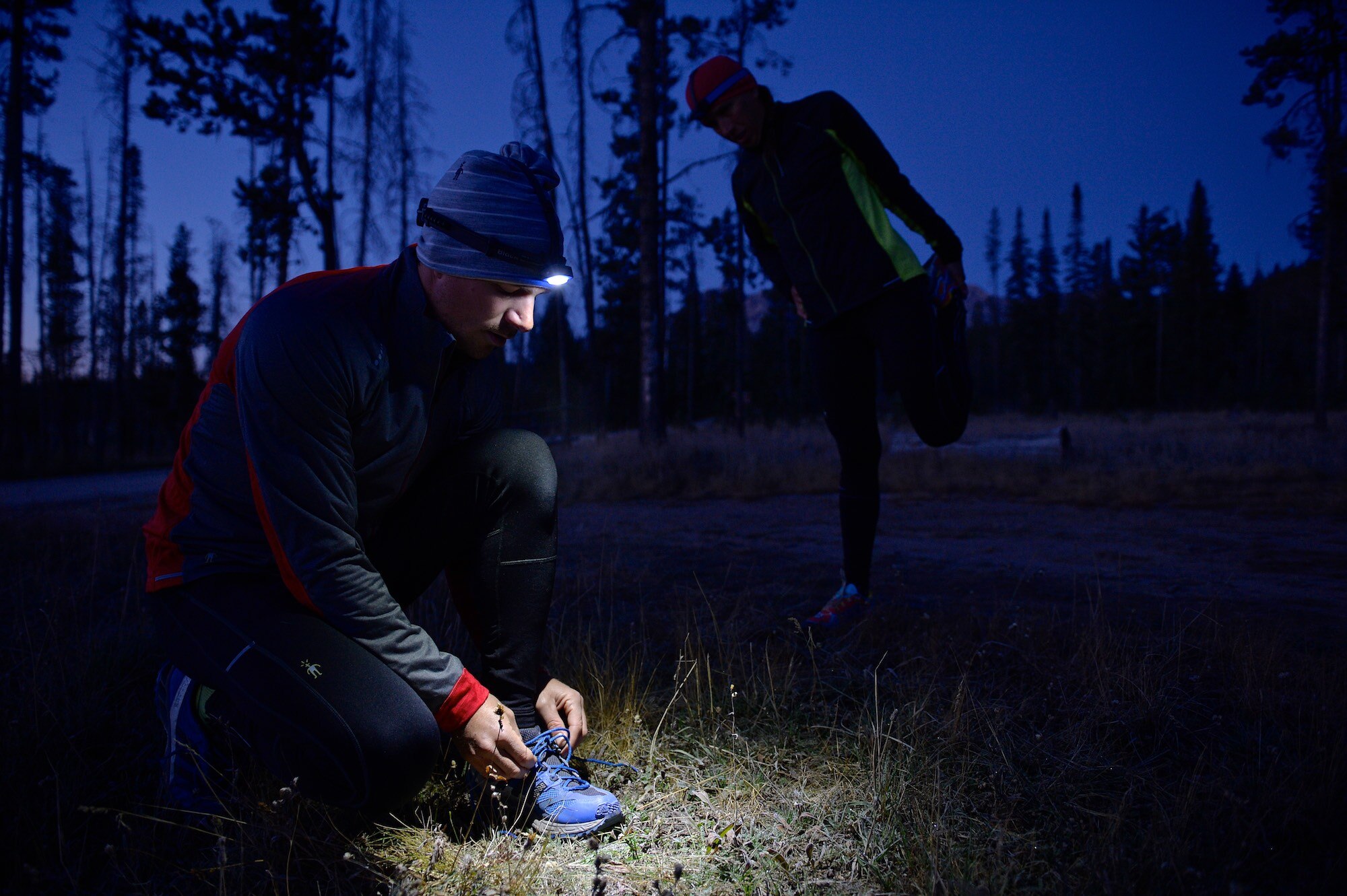
Darkness comes early and quickly during the winter so don't forget your headlamp.
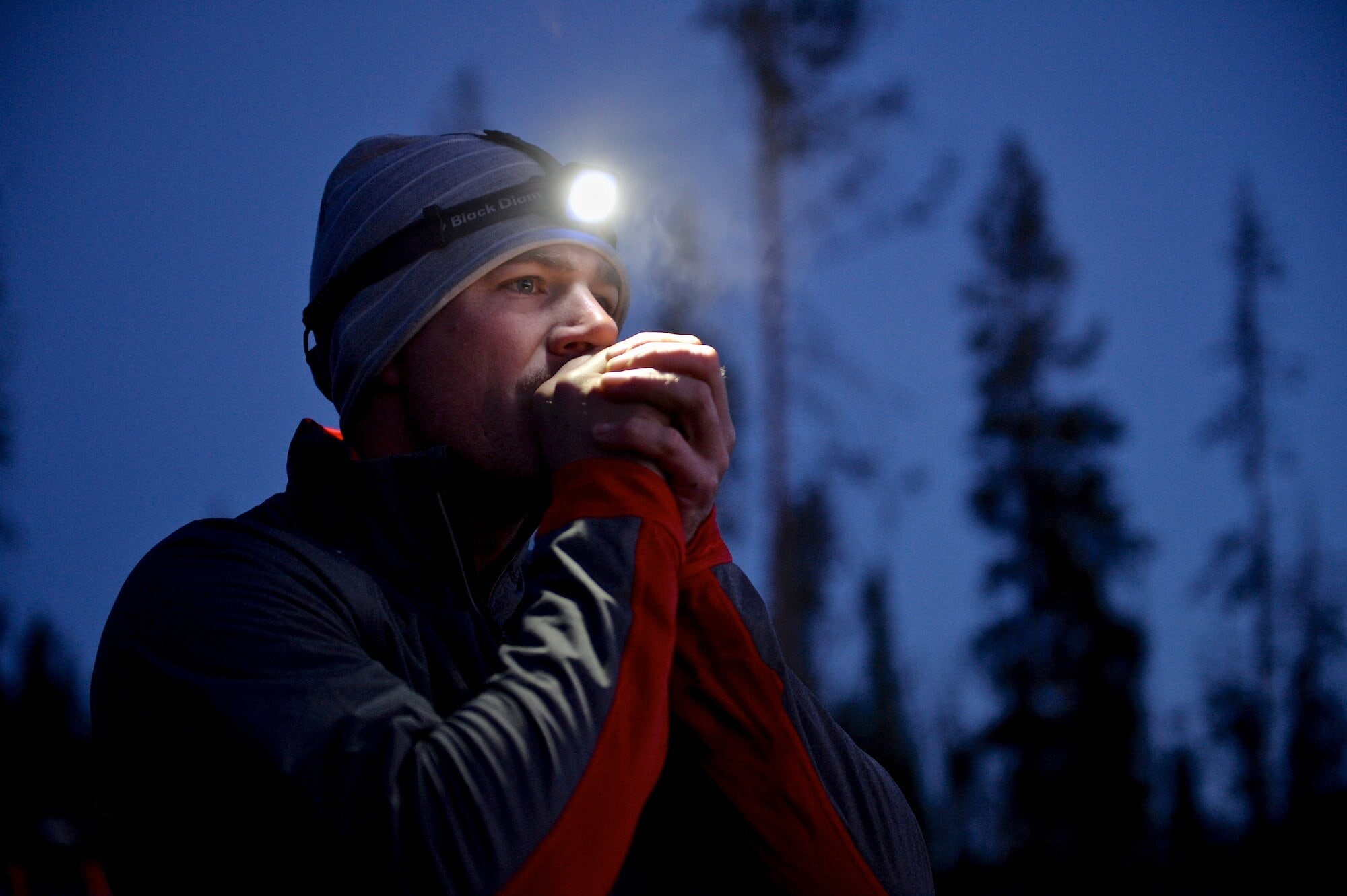
Layering is essential along with a lightweight hat and gloves.
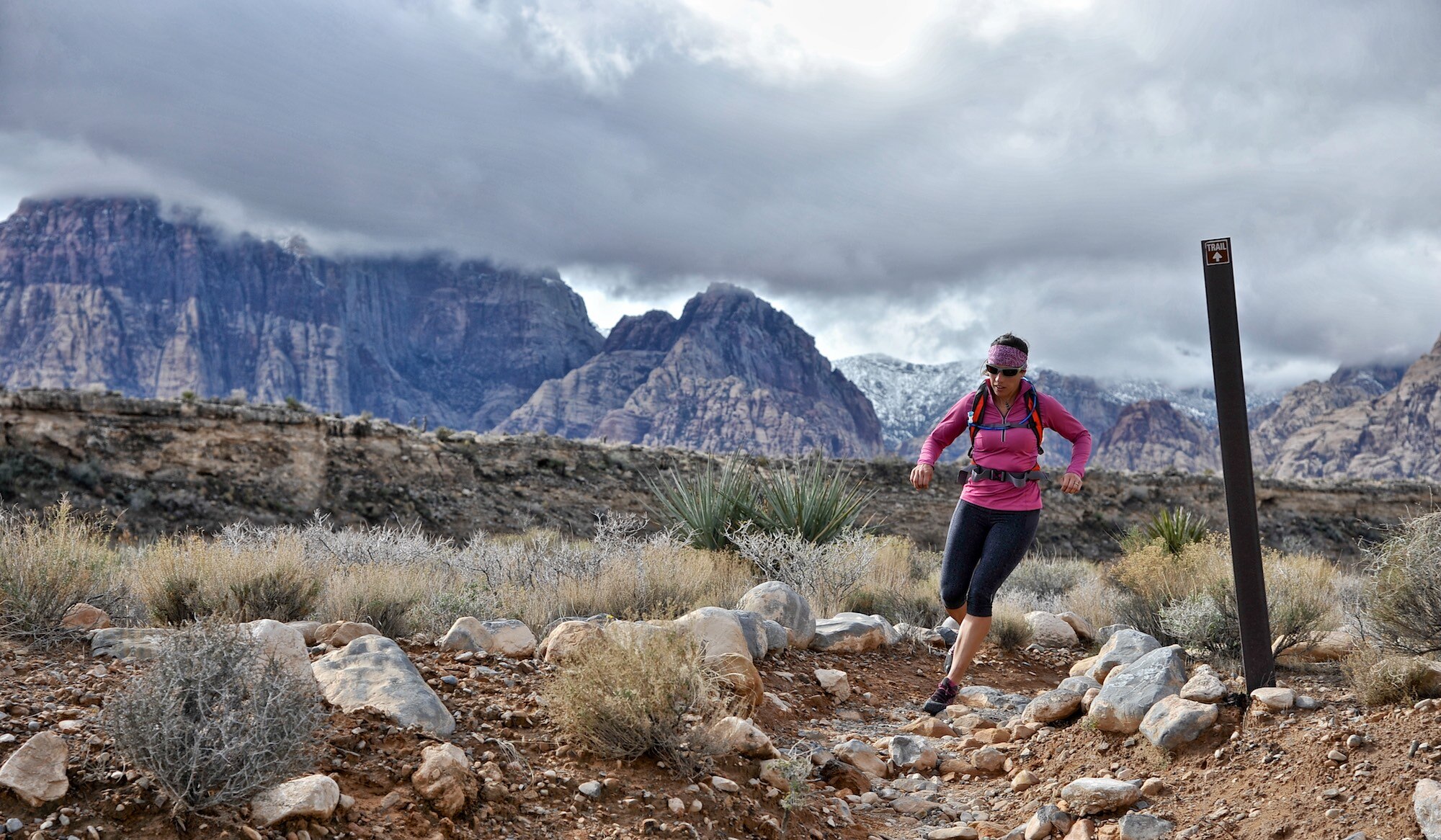
If you're still not having fun, set a goal and reward yourself by traveling someplace warm. The desert Southwest is wonderful this time of year.
